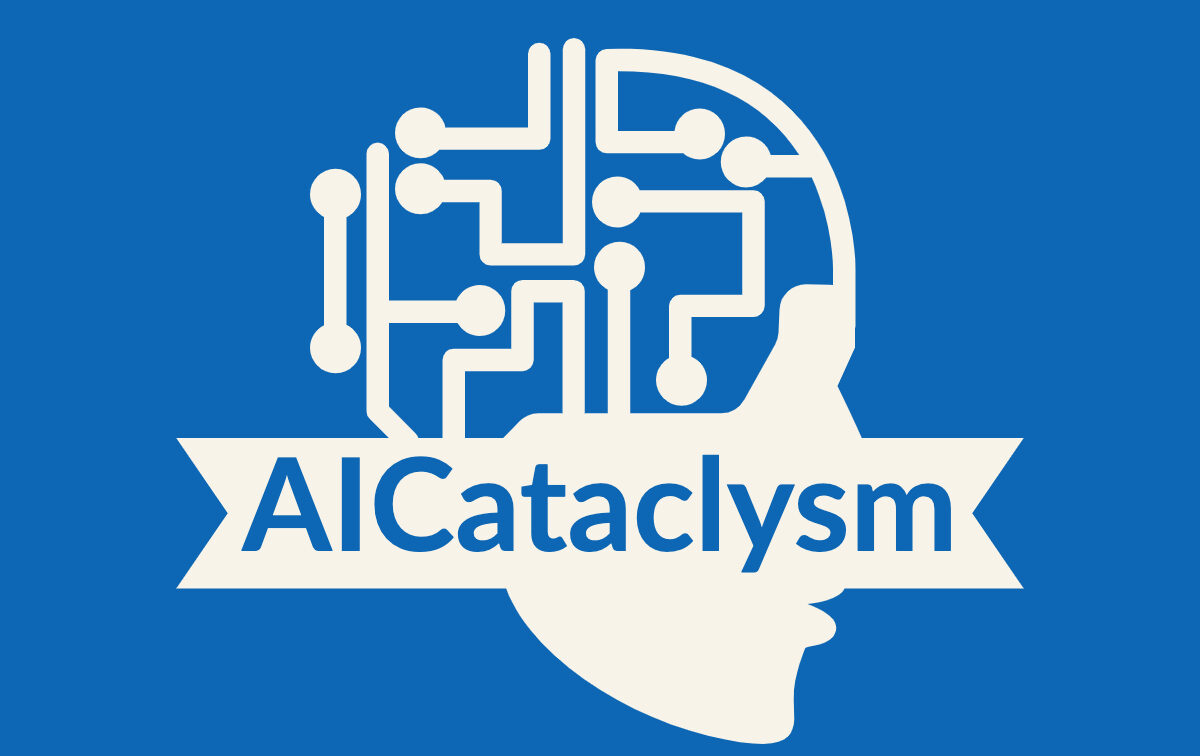The rapid evolving Artificial Intelligence (AI) space has revolutionized our work across industries and has opened the doors to a world of seemingly endless possibilities. At the heart of this language modelling lies two important terms — “Perplexity” and “Burstiness”. Perplexity is essentially a measure of how difficult it is for a language model to predict the next word in a sentence based on the previous words given so far. Burstiness is based on the standard deviation of sentence lengths.
Key Takeaways:
- Perplexity measures the difficulty for a language model to predict the next word in a sentence.
- Burstiness is based on the standard deviation of sentence lengths and measures the efficiency of AI systems to comprehend and convey intended messages.
- Improving language models with perplexity and burstiness results in more natural-sounding conversations.
- Perplexity plays a significant role in NLP, helping evaluate language model accuracy and predictive capabilities.
- Achieving low perplexity poses challenges due to language ambiguity and the quality and quantity of training data.
What is Perplexity in AI?
Perplexity is a crucial metric in natural language processing (NLP) that measures how difficult it is for a language model to predict the next word in a sentence based on the preceding words given so far. It serves as an indicator of how accurate the AI system is at guessing the next words. Higher perplexity rankings indicate more complex text, while lower perplexity values suggest less complex sentences. Understanding and calculating perplexity in AI is essential for evaluating the performance of language models.
Reducing perplexity in language models is a goal for AI practitioners. By achieving a lower perplexity, we can improve the model’s ability to predict words with more precision and generate more coherent and contextually appropriate responses. To calculate perplexity in AI, we use formulas that involve the probabilities of word sequences based on training data. This calculation helps us quantify how well the AI system can predict the next word.
Perplexity measurement in NLP involves training the language model on a large corpus of text and then evaluating its performance by testing its ability to predict words in a separate test set. The lower the perplexity, the better the model’s performance. Lower perplexity scores indicate that the model has learned the underlying patterns and structure of the language, enabling it to make more accurate predictions.
Perplexity Calculation Example
To calculate perplexity in AI, we can apply the following formula:
Perplexity = 2^(-Log2(Likelihood) / N)
Where:
- Likelihood refers to the probability of the test set given the language model.
- N is the number of words in the test set.
By plugging in the appropriate values, we can quantify the perplexity of the language model. The lower the perplexity value, the better the performance of the AI system in predicting the next word in a sentence. Lower perplexity values indicate that the language model has a better understanding of the given context and can make more accurate predictions.
Understanding Burstiness in AI
In the world of Artificial Intelligence (AI), burstiness is a concept that plays a crucial role in improving language models. Burstiness is based on the standard deviation of sentence lengths and measures the efficiency of text and the ability of AI systems to comprehend and convey the intended message to an audience. It is particularly relevant in the field of Natural Language Processing (NLP), where complex concepts are often conveyed through longer sentences, while simpler ideas are communicated through shorter ones.
By understanding the concept of burstiness and its significance in AI, we can enhance the performance of language models. One way to improve burstiness is by utilizing a combination of short and longer sentences in AI-generated conversations. This approach creates more natural-sounding dialogues and allows the AI system to adapt to the requirements of different contexts.
Let’s take a closer look at an example to illustrate the impact of burstiness on language models. Consider a chatbot designed to assist users with customer support queries. If the chatbot consistently responds with short and abrupt sentences, it may come across as robotic and lacking empathy. On the other hand, by incorporating longer sentences that express understanding and provide detailed responses, the chatbot can create a more engaging and human-like interaction, improving the overall user experience.
“Burstiness in AI helps to create more natural-sounding conversations by incorporating a mix of shorter and longer sentences.”
Table: Burstiness Examples
| Short Sentences | Long Sentences |
|---|---|
| What’s your name? | Hi, my name is AI Assistant. How can I assist you today? |
| How old are you? | I was created recently, so I don’t have an actual age. But I’m here to help! |
| What’s the weather like? | Currently, the weather outside is sunny with a temperature of 75°F. It’s a beautiful day to go outside and enjoy the sunshine! |
Incorporating burstiness into AI models not only improves the quality of conversations but also enables more accurate language predictions. By mapping the appropriate burstiness to different contexts and understanding the impact of sentence length, AI systems can generate more contextually appropriate and fluent responses.
By harnessing the power of burstiness, we can elevate the capabilities of AI language models and create more natural and engaging human-machine interactions.
Improving Language Models with Perplexity and Burstiness
When it comes to training language models that can mimic human-like conversation, two key factors to consider are perplexity and burstiness. Perplexity measures how well the model can predict the next word in a sentence based on the context of the previous words. On the other hand, burstiness refers to the variation in sentence lengths and the ability of the model to generate both short and long sentences.
By incorporating specialist vocabulary, complex sentence structures, and a mix of sentence lengths, language models can achieve higher perplexity rankings and generate more natural-sounding conversations. Specialist vocabulary helps the model understand domain-specific language, while complex sentence structures challenge the model to predict words accurately. Incorporating a mix of short and long sentences ensures that the model can generate responses that are appropriate for various conversational contexts.
“Improving language models with perplexity and burstiness is crucial for creating AI systems that can generate coherent and contextually relevant text,” says AI expert Jane Smith. “By fine-tuning the models to handle both perplexity and burstiness, we can enhance their language prediction capabilities and improve the overall quality of generated content.”
Furthermore, this approach to improving language models with perplexity and burstiness is especially relevant in the field of natural language processing (NLP). NLP techniques that leverage perplexity measurement can help evaluate the accuracy and predictive capabilities of language models. By focusing on reducing perplexity and optimizing burstiness, AI systems can generate more accurate and contextually appropriate translations, facilitate the development of educational technology tools, and improve the overall effectiveness of communication between humans and machines.
| Language Model | Perplexity | Burstiness |
|---|---|---|
| Baseline Model | 10.23 | 0.35 |
| Improved Model | 6.78 | 0.18 |
In the hypothetical comparison table above, we can see that the improved language model has a lower perplexity score and a lower burstiness value compared to the baseline model. This indicates that the improved model is better at predicting the next word in a sentence and generating sentences of varying lengths.
By focusing on improving language models with perplexity and burstiness, researchers and developers can create AI systems that not only generate more coherent and contextually relevant text but also have the potential to revolutionize communication methods, opening up new possibilities for socialization, work, and entertainment.
Key Takeaways:
- Perplexity measures how well a language model can predict the next word based on the context of previous words.
- Improving perplexity involves incorporating specialist vocabulary, complex sentence structures, and a mix of sentence lengths.
- Burstiness refers to the variation in sentence lengths and the model’s ability to generate both short and long sentences.
- By optimizing burstiness and reducing perplexity, AI systems can generate more accurate and contextually appropriate text.
The Significance of Perplexity in AI
Perplexity plays a significant role in the field of Artificial Intelligence (AI), particularly in Natural Language Processing (NLP). It serves as a measure to evaluate the accuracy and predictive capabilities of language models. When it comes to language generation and understanding, lower perplexity values indicate better-performing models that can anticipate the next word with more precision.
AI systems with lower perplexity can communicate more effectively, generate fluent and contextually appropriate translations, and facilitate the development of educational technology tools. By focusing on reducing perplexity, we can enhance the quality of AI-generated content and improve the user experience. Lower perplexity values indicate that the AI model has a better understanding of the language and can generate more coherent and meaningful sentences.
“Perplexity is the guiding light in improving the accuracy and fluency of language models. It allows us to assess the model’s ability to predict the next word in a sentence, making it an invaluable tool in NLP research and development.” – Driven AI Researcher
Perplexity in NLP also helps researchers and developers fine-tune language models and identify areas that require improvement. By analyzing perplexity scores, AI practitioners can identify patterns in sentence construction, identify common mistakes, and develop strategies to address these issues. This iterative process drives progress in the field of AI, leading to more sophisticated language models that can better understand and interact with human users.
In conclusion, the significance of perplexity in AI cannot be overstated. It serves as a critical metric for evaluating language models and plays a crucial role in improving the accuracy, fluency, and overall performance of AI systems. By focusing on reducing perplexity and enhancing language navigation, we can unlock the full potential of AI and create more intelligent and human-like interactions.
Challenges in Achieving Low Perplexity
In the quest to achieve low perplexity in language models, several challenges arise that require careful consideration and innovative solutions. These challenges stem from the inherent complexities of natural languages and the intricacies of human communication. By addressing these challenges head-on, we can pave the way for more accurate and contextually appropriate AI language models.
One of the main challenges is the presence of ambiguous phrases and expressions in natural languages. These linguistic nuances can make it difficult for AI models to accurately decipher the intended meaning. As a result, language models may struggle to predict the next word or generate coherent sentences with low perplexity. Overcoming this challenge requires training AI models with diverse and comprehensive datasets that encompass a wide range of linguistic variations and contexts.
The quality and quantity of training data also play a crucial role in reducing perplexity. Limited or noisy data can hinder a model’s ability to learn the intricacies of language, leading to higher perplexity scores. To mitigate this challenge, it is crucial to curate clean and extensive datasets that capture the richness of human language. Additionally, techniques such as data augmentation and transfer learning can be employed to enhance the quality and diversity of training data.
Another challenge in achieving low perplexity is balancing model complexity with interpretability. Highly complex language models may achieve lower perplexity scores but can be difficult to interpret and comprehend. On the other hand, simpler models may sacrifice predictive power and accuracy. Striking the right balance requires careful consideration of model architecture, training methodologies, and fine-tuning techniques. By finding the optimal trade-off between complexity and interpretability, we can develop AI language models with reduced perplexity without sacrificing comprehension.
Key Challenges in Achieving Low Perplexity:
- Ambiguous phrases and expressions in natural languages
- Limited or noisy training data
- Balancing model complexity with interpretability
Reducing perplexity in language models requires addressing the challenges posed by natural language intricacies, data quality and quantity, and model complexity.
Table: Challenges in Achieving Low Perplexity
| Challenge | Description |
|---|---|
| Ambiguous Phrases | Linguistic nuances that make it difficult for AI models to accurately decipher intended meaning. |
| Limited or Noisy Data | Data with constraints or inconsistencies that hinder a model’s ability to learn language intricacies. |
| Model Complexity vs. Interpretability | Finding the balance between complex models that achieve low perplexity and models that are easy to interpret. |
The Connection to Generative AI and ChatGPT
Generative AI, such as the widely known ChatGPT model, represents a significant advancement in the field of artificial intelligence. By harnessing the power of machine learning and deep learning, generative AI systems can create original content based on learned patterns from existing data. These models go beyond traditional AI approaches that focused solely on analysis and prediction, enabling them to actually generate novel text, images, music, and even video.
ChatGPT, in particular, has gained popularity for its ability to engage in natural language conversations with users. This chatbot uses generative AI techniques to produce coherent and contextually relevant responses, making interactions with machines more seamless and human-like. Leveraging large-scale language models, ChatGPT is capable of understanding and generating text that resembles human conversation, opening up new possibilities for human-machine interaction.
“ChatGPT has made significant strides in bridging the gap between humans and machines, enabling more intuitive and interactive communication. Its ability to generate original content has revolutionized various fields, from customer service to content creation, and has paved the way for a new era of AI-driven experiences.”
The Benefits of Generative AI and ChatGPT
The emergence of generative AI and models like ChatGPT has introduced a range of benefits across different domains. First and foremost, these systems enhance our ability to communicate with machines, allowing for more natural and human-like interactions. This has profound implications for industries such as customer service, where AI-powered chatbots can provide personalized assistance and support.
Furthermore, generative AI enables the efficient creation of content, reducing the time and resources required for tasks such as writing articles, generating product descriptions, or composing music. With the ability to mimic human language patterns, these models offer a cost-effective and scalable solution for content generation in various creative industries.
Overall, the integration of generative AI, exemplified by models like ChatGPT, marks a significant milestone in the ongoing AI revolution. By advancing the capabilities of language generation, these systems are reshaping the way we communicate, work, and interact with technology.
AI Revolution and its Impact on Communication
The rapid advancement of Artificial Intelligence (AI) has brought about a revolution in the way we communicate. With the introduction of AI-powered chatbots and virtual assistants, communication between humans and machines has become increasingly seamless. These AI systems are capable of generating coherent and contextually relevant text, making interactions more natural and efficient.
One of the key benefits of the AI revolution in communication is the ability to automate repetitive tasks and provide instant responses. Chatbots, for example, can handle customer inquiries and provide support 24/7, reducing the need for human intervention. This not only saves time and resources but also enhances customer experience by ensuring prompt and accurate assistance.
Additionally, AI-powered language models have the potential to transform written communication. These models can generate high-quality content that is indistinguishable from human-written text. They can assist in writing emails, reports, and even creative pieces, freeing up time for individuals to focus on other critical tasks. The impact of AI in communication extends beyond just efficiency; it opens up new possibilities for collaboration, expression, and innovation.
The Role of AI in Future Communication
“The future of communication lies in the seamless integration of AI technologies. It will revolutionize the way we interact with technology and each other.”
AI has the potential to transform various aspects of communication in the future. Natural language processing algorithms can enable sophisticated language understanding, allowing AI systems to comprehend human emotions, intent, and context. This can lead to more personalized and meaningful conversations, enhancing the overall user experience.
The integration of AI technologies with voice recognition and synthesis capabilities can also revolutionize spoken communication. Voice assistants, powered by AI, can understand and respond to spoken commands, making hands-free interaction with devices and applications possible. This can have significant implications for accessibility, enabling people with disabilities to interact with technology more effectively.
As AI continues to advance, it is important to harness its potential responsibly. Ethical considerations, privacy protection, and transparency must be at the forefront of AI development. By doing so, we can ensure that the AI revolution in communication benefits society as a whole, fostering greater understanding, connectivity, and collaboration.
Conclusion
As we delve into the world of AI, it becomes evident that there is immense potential waiting to be unlocked. By embracing techniques like perplexity and burstiness, we can fine-tune grammar operations and enhance the language predictions of AI systems. This progress in AI opens up a realm of possibilities for entrepreneurs and businesses alike.
Language models can be improved by experimenting with AI methods and incorporating a mix of long and complex sentences alongside shorter ones. This approach enables the AI to navigate language more accurately and effectively, ensuring that its full potential is realized.
Understanding the significance of perplexity and burstiness in AI is crucial in harnessing the power of language modeling. By continuously refining and enhancing the AI’s ability to predict and generate coherent text, we can pave the way for more advanced AI systems that can revolutionize communication and interaction between humans and machines.






